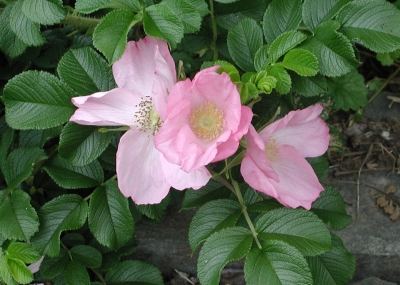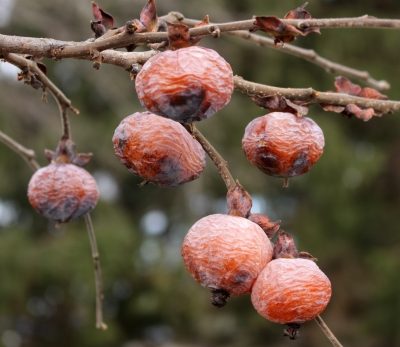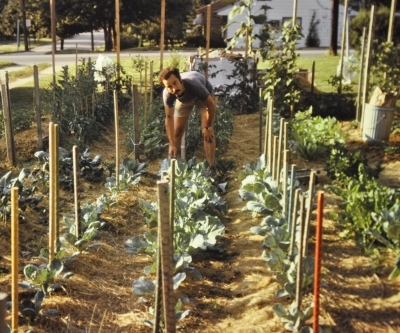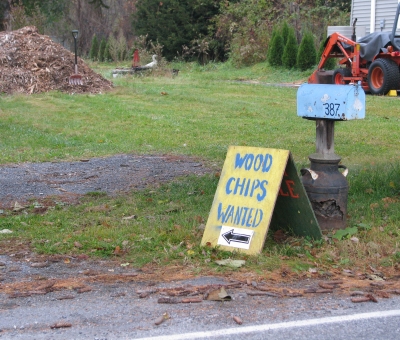NICE HIPS, BUT WHOSE?
/4 Comments/in Flowers, Fruit, Gardening/by Lee Reich2 Contenders for Hips and Rabbi Samuel Redux
As I walked along the beach, I took a look and my first thought was “Nice hips.” But what about the flowers? I’d have to return to the plant next summer to find out, a problem since I was 4 hours from home visiting a relative in Rhode Island.
Most of the roses you see growing seaside are Rosa rugosa. Common names for this plant are Japanese rose, indicating its origin, saltspray rose, indicating its tolerance to beach sand, and rugose rose. “Rugose” means “wrinkled,” which is what leaves of R. rugosa are.
The particular planting of nice-hipped roses staring back at me did not have rugose leaves. What’s more, the hips were about 3/4 of an inch across and bright red. Hips of rugose rose are usually an inch or more across and orangish-red. With this slightly different morphology and the fact that rugose rose is listed as an invasive plant, I assumed that the nice-hipped roses, recently installed as landscape plants, were another species.
With such nice hips, the plants could possibly be dog rose, R. canina, the other rose species valued for its hips. The lack of sepals on the hips also pointed the finger at dog rose. (Rugose rose hips have persistent sepals.) A even closer look would have nailed it; rugose rose’s stems have numerous prickles throughout their length while bold, large, wide, downward-facing thorns line dog rose stems. But I didn’t look closer.
Dog rose, although much less frequently seen, is also considered invasive in some places.
Sowing Seeds for More Hips (and Flowers)
As potentially invasive plants, rugose rose or dog rose should be easy to grow from seed. But no. I’ve propagated roses from seed, and it’s a slow process.
Rose seeds, like those of most other fall-ripening seeds of temperate zone plants, have a physiological dormancy that prevents their immediate sprouting, the consequence of which would be death from cold. So they just sit in moist earth until they have experienced a number of hours of chilly temperatures — 30 to 45° F is ideal — before sprouting, at which time winter has presumably given way to spring weather. Instead of moist earth, that chilly habitat could be within the refrigerator in a plastic bag filled with peat moss and perlite.
But rose seeds have another impediment to germination: a tough seed coat. Plant the seed outdoors and shoots might not poke through the surface of the ground for 2 years. The first winter and summer are spent softening the seed coat, making it permeable to moisture. Beginning the second fall, chilling hours begin to accumulate so that by the second spring, the seed can awaken and grow.
I did pluck a few fruits from that Rhode Island, nice-hipped rose bush, and plan to make new bushes. But I’m too impatient to wait 2 years. “Scarifying” the seeds is a quick way to make the seed coats more permeable. Nicking them with a wire cutter does the trick but would be difficult with such small seeds. An hour or so in warm, concentrated sulfuric acid — followed by a thorough rinsing in water — is likewise effective but a bit dangerous. I’ll follow Mother Nature’s lead and soften the seed coats by keeping the seeds warm and moist. No matter how the seed coat is softened, subsequent cool, moist conditions are still needed before the seeds will sprout.
There’s barely time to get those seeds growing this spring. Two months in moist warmth followed by 2 to 3 months in moist peat and perlite in the refrigerator should awaken them. It’s exciting to check the bag in the refrigerator because, once mechanical and chemical barriers to germination have been overcome, a bag of seeds is usually transformed to a bag of white root sprouts, all at once, as if a switch had been turned on.
The Rabbi Multiplies
I’ll have to make up some extra peat-perlite mix. Cutting all the vertical shoots of Rabbi Samuel fig espalier back to the horizontal arms of the permanent “T” framework have yielded a pile of long stems. I can’t bear to throw them away because every foot-long section has the potential to make a whole new plant.
The rooting media for these hardwood cuttings? Peat and perlite again. A bunch of the stems in a deep pot with just their top buds up out of the peat mix should sprout and root by spring.
Not sure what I’ll do with all the resulting fig plants.
So Many Roses, I Hope
I’m also not sure what I’ll do with all the anticipated rose seedlings, especially since I’m not even sure of their species. I did telephone the public works department of the Rhode Island town where the roses were planted and was told that they were Rosa rugosa. I think they are wrong.
No matter: Rosa rugosa is one of the most fragrant roses with deep pink, sometimes white, flowers that are borne all summer long. Also, like dog rose, with nice, fleshy hips, good enough fresh and excellent for jam and tea.
STILL SOME FRESH FRUIT, and GENDER STEREOTYPING
/3 Comments/in Flowers, Fruit, Gardening, Houseplants, Planning/by Lee ReichFruit for My Mouth, Flowers for My Eyes
As I write this, on December 1st, the Rabbi — that’s the Rabbi Samuel fig — is still ripening fruit in my barely heated greenhouse. That’s commendable. Not so commendable, however, is the flavor; cooler temperatures and sparse sunlight have taken their toll. The drooping fruits look ripe and ready to eat, inside and out, but they are no longer worth eating.
On the other hand, another fruit, Szukis American persimmons, hardly look edible but still have rich, sweet flavor. Outdoors, fruits of this variety of American persimmon cling to bare branches. Their orange skins once stretched almost to the point of breaking over the soft flesh within. Now, alternate freezing and thawing temperatures and drier air have sucked moisture and temper from the flesh, so the skins have shriveled and barely cling. Their darkening does nothing to increase the fruits’ visual appeal.
The ripe fruits are hard to distinguish, by eye, from the almost ripe fruits. The latter still retain some mouth-puckering astringency which has given American persimmons a bad name. An unripe persimmon “will draw a man’s mouth awrie with much torment” wrote Captain John Smith 400 years ago. I give Szukis’ branches a slight shake and only ripe fruits come raining to the ground, at which point the Captain’s further words ring true: “When [persimmon] is ripe, it is as delicious as an apricot.”
Can’t Help Wanting African Violets
Man can’t live by bread alone; a feast for the eyes is also in order. Well, maybe not a feast, but an appetizer, some winter flowers. Probably the easiest and most longlasting of winter blossoms are those of African violet. Okay, okay, I know that African violets have been mostly associated with doilies, lace curtains, and other appurtenances of old ladies (nothing against old ladies).
Generally, I don’t even like the color violet. But African violet’s flowers do brighten up a windowsill that looks out upon a gray and brown landscape.
Now that I’ve gotten my secret attraction to African violets off my chest, let’s talk horticulture. African violet’s whorl of leaves, like those of many low-growing perennial flowers, is actually a compressed stem, one that has been telescoped down so that each leaf and associated node originates just a fraction of an inch above the next lower leaf. But there is some distance between those nodes, so over time the stem does slowly elongate, rising higher and higher out of the ground. And side branches occasionally sprout forth from the leaf axils. The result of all this is that the potted plant becomes, over time, so overgrown with layer upon layer of leaves that the plant no longer can gather enough energy to flower well.
The solution to this problem is to make new plants and then chuck the old ones. All that’s needed to make a new plant is a leaf from an old plant and patience. So a few weeks ago I plucked a few leaves (a few, for insurance) from my old, overgrown African violet and plunged their stalks into a moist mix of peat moss and perlite. A plastic bag covering and held above the leaf cuttings by some twigs provided the needed humidity until roots could develop to keep the leaves turgid. Bright but indirect sunlight fueled, via photosynthesis, new root growth, and within a few weeks, resistance to a gentle tug on the leaves told me that roots had developed.
I removed the cover and now little plants are poking up through the ground alongside the leaf stalks. I’m going to transplant my rooted cuttings into larger pots and should, in a few weeks, be enjoying flowers. By then, I’ll have my knitting also ready.
11th Hour Apple Tree Planting
On to less gender stereotyped gardening: tree planting. Picture the day before Thanksgiving, November 26th. A wet snow is falling and beginning to whiten the ground. In my garage are two sturdy, bare root apple trees, a Hudson’s Golden Gem and an Ashmead’s Kernel, recently arrived from Cummins Nursery and needing planting.
Fortunately, I prepared the plantings site a couple of weeks previously with a 4-inch-deep, broad circle of leaf compost, the most immediate purpose of which was to keep the ground from freezing. Rushing to beat out the snow, I pulled enough compost aside to make space to dig holes, spread tree roots out in each hole, backfilled the soil, sifting it around the roots by pressing with my fingers and bouncing the tree up and down, and then settled all into place with a couple of gallons of water per plant.
I like autumn for tree planting. Roots have opportunity to grow in still warm soil (especially if mulched) while stems won’t grow and need water until spring. The soil is crumbly and soft, in good condition for digging and planting. And autumn planting leaves one less thing to do in the flurry of spring gardening.
However, winter temperatures and furry creatures can be a hazard to autumn-planted trees. The first line of defense, to fend off mice and rabbits and moderate temperatures on the trunk, is a spiral plastic tree guard. An 18” high cylinder of 1/2” hardware cloth provides further defense against mice and rabbits. Beyond that, a higher and wider cylinder of 2×4 fencing should fend off deer and my puppy Sammy. (Past puppies considered newly planted trees as playthings, fun to tug out of the ground.) And finally, the well-furnished, new tree goes into winter with some perfume, a deer-repellant spray, any of which is effective if applied before the plant gets nibbled and renewed monthly.
I expect to harvest the first apples from the new apple trees expected in 3 years.
IT’S ALL ORGANIC, BUT NOT NECESSARILY ALL GOOD
/7 Comments/in Gardening, Soil, Vegetables/by Lee ReichHay, Grass Clippings, Manure, Leaves — Watch Out!
Organic materials — that is, things that are or were once living — are the core of “organic” agriculture, and right from the get go, many years ago, I set out pitchfork in hand to gather these materials. Into large garbage pails toted around in my van I loaded manure from nearby stables. Neighbors let me haul away their bags of autumn leaves.
I even convinced city workers to dump a truckload of harvested lake weeds onto the side lawn of my small rented house. (That was in Madison, Wisconsin, where fertilizer runoff from lawns was spurring growth of lake weeds which, besides making swimming hazardous, were, upon their death, causing oxygen depletion of the lakes.)
Mowings of roadside hay, which I stuffed into the back of the van, were another source of organic matter, used for mulch and for compost. That was before the days of lead-free gasoline, so lead contamination was some concern. Then again, high levels of organic matter in the soil mitigate lead hazards in soils.
More dramatically of concern were bags of grass clippings I once dragged across the yard from my neighbor’s freshly mowed lawn. Hours after I had spread the clippings around my potato’s lush, green vines, their stems twisted and contorted as if screaming in pain — the effect of weedkiller used on the lawn. Perhaps my neighbor was striving for a uniform greensward; perhaps he had inadvertently used a lawn fertilizer laced with weed killer. “Weed and feed” sounds so cheerful and labor-saving. Lawn weedkillers are toxic to broadleaf plants, which means anything but a grass.
The particular weedkiller was probably 2,4-D, also know as Agent Orange (less cheerful-sounding), which is a synthetic category of plant hormone called auxins. At the right concentration and at the right time, whether natural or synthetic, auxins do good things, such as bending plants towards light, initiating root growth in cuttings and in growing plants, and promoting upward growth Otherwise, they can wreak havoc.
I phoned the university extension specialist and was advised to remove the mulch and to adsorb any escaped 2,4-D by mixing activated charcoal into the soil. I did so and subsequent growth was normal.
Home-Grown vs. Imported Hay
I now have the luxury of scything much of the organic material I need from my own one acre field. Early season mowings are succulent and nitrogen-rich, just like grass clippings. Later mowings are hay, dry and carbon-rich. During the growing season, depending on what and when I mow, I can harvest either end of the spectrum, or anything in between.
I no longer rely on roadside mowings as organic material for my plantings. They are nowadays too finely chopped for easy and fast scooping up with a pitchfork. Even if that were not the case, I would have second thoughts about bringing such hay on-site. Again, weedkillers are the threat, more insidious these days because of use of more persistent ones. So-called pyridine carboxylic acid weedkillers might hang around in the soil or on sprayed vegetation for anywhere from less than 30 days to several years, even in the manure from animals that have eaten sprayed vegetation!
Caution, Testing, & Time to Avoid Problems
I do still occasionally supplement home-harvested organic materials with imported ones. One source is horse manure from a local stable.
A few weeks ago I was pitching forkful after forkful of manure into the bed of my pickup truck when I glanced over at the far side of the pile and noticed some discarded hay, much of it still pressed together in partial bales. “How convenient,” I thought, for mulching, compost, or bedding for my chickens and ducks.
On my drive home I started thinking about that hay riding behind me. Could it be laced with weedkiller?
For the most straightforward answer, I could just ask the stable owner. A stable hand told me that the hay had been shipped from a few hours away. Rather than cross examine my manure donor, I looked closely at the hay to see if any clover, alfalfa, or other broadleaf plants were mixed in. No. Of course, lack of broadleaf plants does not prove that weedkiller was used.
My final recourse was to do a bioassay of the hay, essentially, to plant seeds in it and observe their growth. Two 4-inch flowerpots, one with chopped up, homegrown hay and the other with the chopped up, imported hay, served as growth media, into which went 3 bean seeds each. Long story short: Growth seemed normal in the imported hay although germination was slower, probably because its texture lent itself to more readily drying out.
To put my mind thoroughly at ease about the hay, I’m going to let the pile sit for a few months, where rain, sun, and, eventually warmth, can do their job in splitting apart the insidious weedkiller molecules. The hay is not for my compost, in the dark innards of which weedkillers, if present, would be particularly persistent.
Autumn Leaves, Good Stuff
Just like the old days, I do still import organic materials in the form of bagged autumn leaves — except a lot more these days. They are both weed- and weedkiller-free.
New Video from Last Summer: Grape Training & Pruning
If you’d like to join me on a brief journey back into summer, see www.leereich.com/videos for a new video, I made last summer, about how to prune that quintessential summer vegetable, tomatoes, just like the Godfather.













